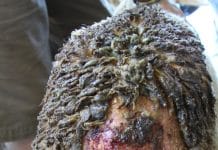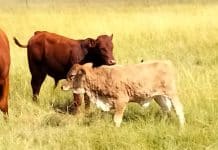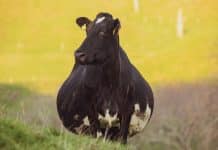This is the first article in a series on fire prevention and management. The articles will be published in Stockfarm magazine and on www.agriorbit.com monthly.
Wildfires destroy thousands of homes and hectares of farmland and plantations every year. If you want to reduce the risk posed by wildfires you must be prepared. Ask yourself the following questions: How fire-resistant is your home? What does the topography look like on and around your property? What type of vegetation and ‘fuel loads’ are close by? To prepare for the fire season ahead, consider the following basic checklist.
Pre-fire preparedness
- Training: Trained staff (from farm workers to supervisors) are essential to ensure a safe effective and efficient fire suppression operation, and the management of resources and use of equipment available on or around your property during fire operations.
- Personal protective equipment (PPE): Well-equipped firefighters always ensure safe and effective operations. Never go to a fire line wearing synthetic fibres and rubber boots. By providing the correct gear you not only reduce the risk of injury, but also make it possible to work in that harsh environment. Something as simple as a proper mask and fire goggles can make a world of difference.
- Fire management plan: Meet with neighbours to discuss a fire management plan – who needs to be contacted, and how and when must the plan be activated. It is important to know what resources are available in your area and what risks need to be addressed. The delegated responsibilities, the command structure and standard operating procedures during a fire must be formalised, as there is no time to allocate responsibilities when fires are raging; it should be second nature to all involved.
- Equipment maintenance: It is essential for equipment to be in good working order and easily accessible. Store fire beaters, rakes, knapsacks, hoses, and other firefighting equipment in one, easily accessible place. Make sure your skid unit is in good working order.
- Insurance: Without proper insurance cover in place, it is unlikely that landowners will be able to recover from financial losses in the event of a fire or accident. Verify with your insurance broker that you are adequately covered against fire and that your policy includes protection against the spread of wildfires.
- Are you a member of your local Fire Protection Association (FPA)?
- Reduce fuel loads and get rid of alien vegetation on your land. Pay special attention to fuel load management in down-slope areas. Remember, fire travels much faster uphill.
- Make sure your firebreaks are in place and that they are wide and long enough to have a reasonable chance of preventing a fire from spreading to or from a neighbour’s land. The following is an indication of minimum widths needed:
- Crop residue/fallow land –2,5m wide.
- Natural veld on agricultural land – 2,5m x the height of vegetation (minimum of 5m).
- Road verge – 3m on either side to be maintained annually.
- Labour housing, farm infrastructure and homesteads– 10m.
- Wildland interface – 20m, depending on the adjacent land type such as protected areas, formal forestry plantations, etc.
Livestock
- Prepare and regularly maintain fuel-reduced areas into which your livestock can be moved in case of a wildfire.
Building maintenance
- Clear debris from gutters.
- Clear any dead leaves or dry branches around your buildings.
- Have a perimeter of roughly 4m around your buildings where the grass is kept short and clear of any dry material that might pose a fire risk.
- Secure loose roof tiles to prevent flying embers from finding a way in and igniting your building.
- Remove flammable and dry vegetation from under decks and against walls and pillars.
- Check that hoses are long enough to reach all sides of the house/building.
- Consider removing branches or trees that overhang buildings and remove dead and dry branches from trees. Branches should be trimmed at least 2m off the ground.
- Cut long grass and undergrowth. – Nicoléne Neveling, managing director: Nevaqu Fire and Rescue, and Michelle Kleinhans, managing director: Dynamic Incident Management







